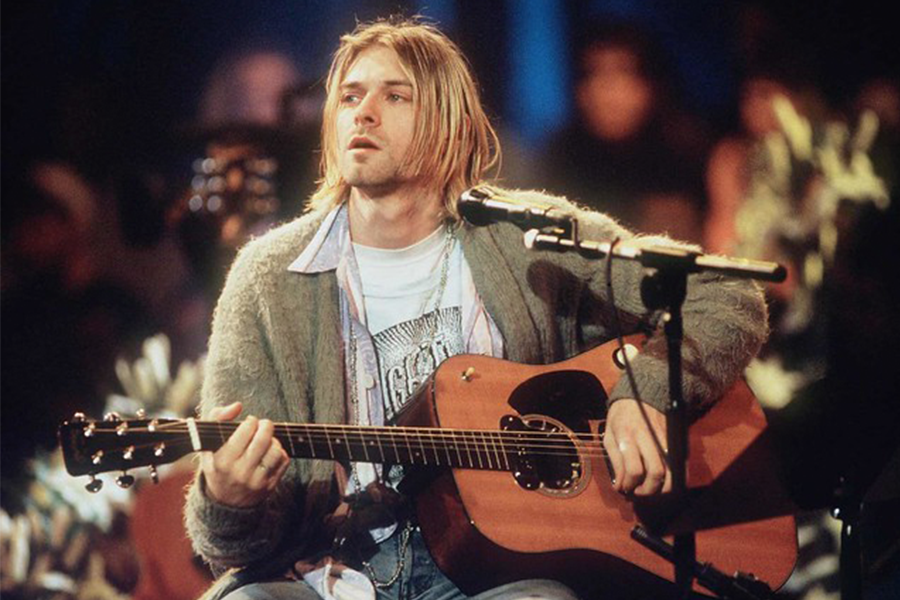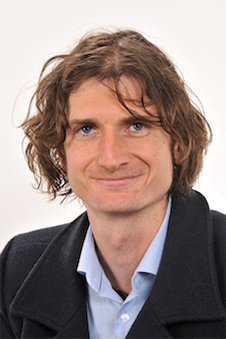
Today is the 30th anniversary of the death of Nirvana front man Kurt Cobain. Photograph: Flickr
Today marks 30 years since the death of Kurt Cobain, front man of rock band Nirvana. Koren Allpress talks with Dr Mike Holland and Hugh Harlow, both lecturers at Otago’s Music Department, about the appeal of Nirvana and the impact it's had on modern music.
 Dr Mike Holland
Dr Mike Holland
Nirvana discovered the secret to success in the music industry through speaking directly to the youth of its time, according to University of Otago music lecturer Dr Mike Holland.
The band established itself as part of the Seattle grunge scene in the late 1980s but went on to find unexpected mainstream success with its Smells Like Teen Spirit, the first single from their breakthrough album, Nevermind, in 1991.
Mike says part of what made Nirvana so popular was it spoke directly to the youth of the time – the late ’80s and early ’90s, with Gen X making up a large part of its audience.
“Like many musical movements beforehand – hippy counterculture, punk – [Nirvana] represented a whole lot of concerns that were current for youth and became the emblem for grunge,” he says.
“People talk about grunge music as slowed-down punk. You can see similar parallels between punk and class politics in the UK a decade or two earlier, and grunge music representing a group of disenfranchised youth.”
In becoming popular, though, the band was unwittingly “pulled into the machinery” of the music industry. Superstar artists throughout history have kept major record labels afloat and Nirvana became that superstar for Sub Pop.
“But it had huge consequences for members of Nirvana and its relationship with the music scene they used to be connected with,” Mike says.
Nirvana represented this turning point – it went from being a part of Seattle Grunge, which was a music scene based on a place and social reality, to a band that could be found at a department store; “it becomes incorporated, it becomes part of the mainstream”.
“Anytime something becomes as popular as Nirvana did, it’s already become disconnected from its own roots.”
Compared with other grunge artists of the time, such as the Melvins or Mudhoney, Nirvana had more of a “pop song writing sensibility”, Mike says.
Nirvana is more closely connected with The Beatles from a musicological point of view, but instead of being traditional pop, it was “distilled down into this raucous, angry sounding slow, punk-rock music”.
“It’s angry music you can whistle along to.”
 Hugh Harlow
Hugh Harlow
Professional Practice Fellow Hugh Harlow says that when Nirvana came along there were a lot of bands doing similar things, but the difference was that Nevermind was presented in a way that made it appealing to a mainstream audience.
Cobain was different from other song writers of the time because he sung about mental illness. While not a new topic for art as a whole, mental illness was now being given a spotlight in the mainstream in a way in which teenagers could engage.
Hugh also believes part of Nirvana’s success stems from a reaction against very “hyper-produced” rock metal bands such as Def Leppard and Motley Crew.
“It might have been a reaction against the promises of the ’80s that weren’t really coming into fruition.”
Cobain was relatable because he played guitars that cost less than $100 and used second-hand equipment.
“He wasn’t using the really expensive, top-end stuff that the guitar heroes of the late ’80s were, so I think that was far more identifiable to a lot of kids,” Hugh says.
“The songs were more accessible, there wasn’t the virtuosity and stuff, it was very raw and it reflected where a lot of people saw themselves.”
The band continues to resonate with young people.
“I still get students coming into my lectures in first year wearing Nirvana t-shirts, which is pretty amazing considering Cobain wasn’t even alive, let alone producing new music, when most of them were born.”
The band has become an historical emblem in the same way that Jimi Hendrix, the Sex Pistols, Grandmaster Flash and the Furious Five, and The Doors did.
There are two things Mike recommends anyone interested in grunge read – Catherine Strong’s book Grunge: Music and Memory and Steve Albini’s letter that he wrote to Nirvana prior to them hiring him to record the album In Utero.
“[Albini’s letter] sums up a lot of these things in this really beautiful way, where its opinionated, counterculture approach to making records meets music industry pressure to create 'Radio-Friendly Unit Shifters.’”
“It’s this perfect distillation of the worlds Nirvana were walking between.”
Of Nirvana’s discography, Hugh is a fan of Incesticide and Bleach, while Mike enjoys the live record From the Muddy Banks of the Wishkah.
Comparing From the Muddy Banks of the Wishkah with Nevermind is a good explainer for how much of a change the band’s production went through, Mike says.
“The role of Butch Vig, who produced that break-through record, is another really important part of the Nirvana story,” Mike says.
About eight years ago, Hugh went to Aberdeen, Washington, and stood on the “muddy banks” of the Wishkah.
“I was only there for a day, but it was a pretty dreary, depressing place,” Hugh recalls.
“It just seemed like a quiet industrial town with bad weather, so you can sort of understand why someone who grew up there might have that reaction.”